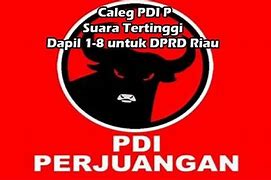
Sumatra Kobra Gift
Die Sumatra-Kobra (Naja sumatrana), auch als Äquatoriale Speikobra bezeichnet, ist eine Giftschlange aus der Gattung der Echten Kobras (Naja).
Die Sumatra-Kobra erreicht eine maximale Länge von 150 cm, im Allgemeinen sind jedoch Exemplare von 100 bis 120 cm bekannt.
Hinter dem Scheitelbein befinden sich keine großen Schilde. Es gibt ein Voraugenschild, drei Hinteraugenschilde, acht Unterlippenschilde und sieben Oberlippenschilde. Davon berühren das dritte und vierte die Augen. In der Körpermitte befinden sich 15 bis 25 Rückenschildreihen. Die Rückenschuppen sind glatt. Die Anzahl der Bauchschilde beträgt 162 bis 206. Das Analschild ist vollständig. Es gibt 40 bis 55 Subcaudalschuppen, davon sind die vorderen vollständig und die hinteren geteilt. Die Grundfärbung ist gelb bis gelblichgrün. Auf Borneo kommen auch schwarze Exemplare vor. Die Oberseite des Kopfes ist bräunlichgelb oder oliv. Die Lippen und der Hals sind gelblich. Die Haube ist nicht gemustert. Die Augen sind dunkel und die Zunge rosa. Die Bauchseite ist gewöhnlich leuchtend gelb, hellgelb oder schwarz. Gelegentlich findet man Exemplare mit unregelmäßig geformten bräunlichen Flecken an der Unterseite der Haube. Juvenile Schlangen haben manchmal helle Querlinien. Das Gelege dieser Art kann aus bis zu 23 Eiern bestehen.
Das Verbreitungsgebiet der Sumatra-Kobra erstreckt sich von der Malaien-Halbinsel, Borneo, Sumatra und die umliegenden Inseln bis nach Palawan und die Philippinen.
Die Sumatra-Kobra ist vom Tiefland und hügeligen Regionen bis in Höhenlagen von mindestens 1500 m anzutreffen. Sie bewohnt die Ränder der tropischen Feucht- und Trockenwälder, insbesondere entlang von Lichtungen sowie tropische und subtropischen Bergwälder, Sümpfe und Marschland, Plantagen, landwirtschaftlich genutzte Flächen, Reisterrassen, Gärten und urbane Gegenden. Sie hält sich häufig an feuchten Plätzen mit dichter Vegetation in der Umgebung von Gewässern auf.
Die Sumatra-Kobra ist ein Bodenbewohner, ist aber auch in Gewässern anzutreffen. Sie ist hauptsächlich nachtaktiv. Tagsüber nutzt sie Erdhöhlen in angemessener Größe als Ruheplatz und geht nach Einbruch der Dunkelheit auf die Jagd nach Säugetieren, insbesondere Ratten, Amphibien, Echsen, Vögeln und anderen Schlangen. Diese Art ist nicht aggressiv. Da die Schlangen aber häufig in menschlichen Behausungen anzutreffen sind, kommt es immer wieder zu tödlichen Bissen. Wenn die Sumatra-Kobra bedroht wird, richtet sie ihre Haube nach oben und speit ihr sehr starkes Gift sehr treffsicher in die Augen des Angreifers.
Diese Schlange kommt im Norden von Malaysia, in Thailand, Singapore, in Teilen von Indonesien - und dort auf Sumatra, Borneo, Bangka und Belitung sowie auf den Philippinen vor. Die Schlange findet man sowohl im Tiefland als auch in Höhen bis zu ca. 1.500 m. Sie lebt bevorzgt an den Rändern von tropischen Feucht- und Trockenwäldern, insbesondere entlang von Lichtungen. Aber man findet sie auch in tropischen und subtropischen Bergwäldern, in Sümpfen, Plantagen sowie in Reisfeldern. Sogar in Gärten kann sie beobachtet werden. Sie ist dämmerungs- und nachtaktiv und lebt am Boden. Tagsüber verkriecht sie sich in Erdhöhlen. Ihre Nahrung sind hauptsächlich Kleinsäuger wie Ratten und Mäuse, Vögel und kleine Reptilien sowie Frösche und Kröten
The last large contiguous deep rainforest area of ??Sumatra has been suffering for years due to a sharp decline in forest cover for the native large mammals such as the Sumatran elephants and orangutans. The increase in deforestation and the establishment of oil palm plantations in areas surrounding the national park pose a significant threat to their habitat. The animals often have to leave their safe havens in search of food, encroaching into human settlements, which further exacerbates conflicts between the locals and wild animals.
In 1998, the ZGF launched a conservation project for the reintroduction of orangutans into the wild in order to protect the region's unique ecosystem. The aim of the project is to establish a viable orangutan population in the centre of Sumatra with the help of a team of local project workers who work in close cooperation with the local population to educate and raise awareness about the importance of protecting the rainforest. Orangutan orphans who have been found or rescued from illegal captivity are prepared for release into the wild by training them at the jungle school in the Open Orangutan Sanctuary (OOS).
Thanks to the long-standing support of sponsors such as Hellabrunn Zoo, the programme has since been expanded to become an extensive landscape conservation project. A legacy gift left to the zoo will now see even further expansion of Hellabrunn's cooperation with the ZGF. "The aim of the project at Bukit Tigapuluh has always been the release of Sumatran orangutans into the wild to strengthen the overall population of a species threatened with extinction in Sumatra," explains Julia Knoll, head of species conservation and education at Hellabrunn Zoo. "With this one-off financial contribution, Hellabrunn Zoo is fulfilling the wish of a deceased friend of the zoo to invest in the care of the orangutans in-situ."
The support comes at just the right time: Last April, two orangutan infants, Sudin and Siti, were brought to the reintroduction programme - the youngest so far. Thanks to the intervention of the Indonesian authorities, the two one-and-a-half-year-old babies were able to escape a fate of misery and were handed over to the care of the ZGF team. However, this presented a major challenge for the entire ZGF project team. “ZGF operates two orangutan stations for the reintroduction programme, south and south-east of the national park. Conversion work is now underway so that our colleagues can provide the best care for the two young orangutans," says ZGF programme manager Dr Peter Pratje, who is delighted about the newcomers. The young orangutans are currently being housed in a specially set up infant station at the Sumatra Orangutan Rehabilitation Centre (SORC). "Orphans at such a young age have to be cared for around the clock by skilled carers in the first years of their life in order to compensate for the lack of physical contact with the mother. In addition, the carers have to teach the infants basic behaviours that they would normally learn from their mothers,” adds Pratje. Caring for the orphans in the best possible way requires time and additional staff. Furthermore, the technical infrastructure on site also needs to be upgraded.
In light of the new cooperation, Zoo Director Rasem Baban takes the opportunity to emphasise Hellabrunn Zoo's important role as an educational and nature conservation institution: "As a modern, scientifically-led zoo, we take our duty of raising awareness among visitors about biological diversity and nature conservation very seriously. Our animals in Munich are ambassadors for their species in the wild and we look forward to making a further contribution to their preservation.”
Visitors can learn more about the challenges for nature conservation in the great ape's habitat and the species protection programmes supported by Hellabrunn in the Species Conservation Centre and the Orangutan Hall at the zoo. Visitors can also make a small donation to support the conservation effort via the donation box.
Ular-sendok sumatra (Naja sumatrana) adalah spesies ular sendok penyembur (Spitting cobra) yang endemik di Asia Tenggara. Ular ini juga disebut kobra hitam, Kobra sumatra, kobra melayu, atau kobra khatulistiwa. Sebutannya dalam bahasa Inggris di antaranya Equatorial spitting cobra, Malayan spitting cobra, Sumatran spitting cobra, black spitting cobra, atau golden spitting cobra. Ular ini merupakan salah satu jenis ular sendok yang mampu menyemprotkan bisa ke arah pengganggunya.
Panjang tubuh ular-sendok sumatra umumnya berkisar antara 0.9 sampai 1.2 meter, tetapi bisa juga mencapai 1.5[2] atau 1.6 meter.[3] Kepalanya berbentuk elips dan dapat dibedakan dari lehernya. Matanya berukuran sedang dengan pupil bundar.[3] Ular ini tidak memiliki tanda pada lehernya. Pewarnaan tubuhnya memiliki dua varian: warna kekuningan pada spesimen-spesimen di Thailand, dan warna kehitaman pada spesimen-spesimen di kawasan Nusantara (Malaysia, Singapura, Indonesia, dan Filipina).[4]
Sisik-sisik pada dorsalnya (tubuh atas) tersusun sebanyak 15 sampai 19 baris di bagian tengah badan,[3] sisik ventral sebanyak 179 sampai 201 buah, dan sisik subkaudal sebanyak 40 sampai 57 buah.
Ular-sendok sumatra tersebar di Thailand, Malaysia, Indonesia (Sumatra, Bangka-Belitung, dan Kalimantan), dan Filipina (Palawan, Kep. Calamian, dan mungkin juga pulau-pulau di sekitarnya).[1]
Ular-sendok sumatra terdapat di daerah dataran rendah hingga ketinggian 1.500 meter dpl. Habitat utamanya adalah hutan, tetapi juga sering ditemukan di daerah perkebunan dan pemukiman. Ular ini aktif pada siang hari (diurnal) dan berkelana di atas tanah (terestrial).[3] Makanan utamanya adalah tikus dan katak,[4] akan tetapi ular ini juga memangsa ular lain, kadal, dan beberapa hewan kecil lainnya.[3]
Seperti jenis kobra lainnya, ular-sendok sumatra memiliki racun bisa neurotoksin. Kemungkinan juga terdapat kandungan kardiotoksin dan sitotoksin pada bisanya. Ular ini juga mampu menyemburkan bisa ke arah mata pengganggunya. Bisa yang mengenai mata akan menyebabkan kebutaan apabila tidak segera ditangani.
Melewati jalur lintas Sumatra, momen menegangkan saat berpapan dengan bus ini bikin penumpang teriak histeris
Jalan Lintas Riau-Sumatera Barat mendapat perhatian khusus selama arus mudik Lebaran Idul Fitri. Jalur ini selalu dipadati pemudik ataupun masyarakat dari Bumi Lancang Kuning untuk menghabiskan libur panjang ke Ranah Minang.
Setelah menyerahkan diri, keduanya langsung menjalani proses penyelidikan Satlantas Polres Tanah Karo.



